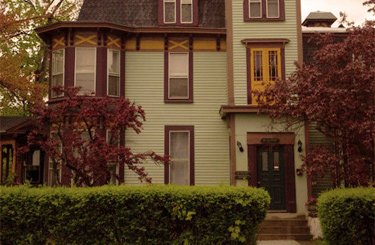
The Truth About Treatment Sprawl
When the person we love enters an addiction recovery program, we’re usually exhausted, hopeful, and maybe feeling a little bit guilty or a lot elated that Billy is now temporarily someone else’s responsibility and we can finally get a full night’s sleep. The sheer relief of not having to defend against the cons and manipulations of active addiction can make the sky seem more blue and the white clouds puffier. Our loved one is away and off the streets for a 90 day residential drug rehab and we can finally enjoy a cautious optimism.
Then treatment sprawl begins. We start to hear that 90 days is the minimum length of a residential stay for effective addiction treatment. They tell us the best drug rehabs require a six to 12 month commitment. If Billy is catching on, he’s telling us that it takes 365 days before he will feel truly comfortable staying clean and sober for a full 24 hours (huh?). We start to fear a new, professionally sponsored type of addiction-fueled manipulation. (Unless, of course, we’ve been down this addiction rehab road before, in which case we dropped Billy off with an 18 month supply of clean underwear.)
Is treatment sprawl just another con by money hungry treatment facilities? Has our loved one sipped the KoolAid? What aspect of drug and alcohol treatment could possibly take a year? Just how many months does it take to relearn good dental habits? And what’s up with all those cook-outs?
Why Long-Term Residential Drug Rehab Really Does Need To Be Long-Term
The quick explanation for treatment sprawl is that all those drugs did quite a bit of damage to Billy’s brain. The CDC (great resource although you have to poke around a bit on the site before you find your way to the substance abuse sections) reports that:
A more sophisticated understanding of addiction has emerged in the last two decades and this is helping to clarify the disconnect between (treatment) expectations and reality:
Addiction is a brain disease. Long-term drug use causes profound changes in brain structure and function that result in uncontrollable compulsive drug craving, seeking, and use.
The changes in brain function and structure that occur with drug use persist long after drug use is stopped.
The best residential drug and alcohol rehabs appreciate the consequences of these changes in brain function and build their programs around helping the recoverer recognize the impairments and impulses that jeopardize not just recovery from substance misuse disorder, but also that threaten the establishment of a responsible adult life.
The American Society for Addiction Medicine, a terrific resource for understanding how the disease of addiction affects the brain, has drafted an ABC description of the primary ways drug use impairs the addict:
- inability to consistently Abstain
- impairment in Behavioral control
- Craving; or increased “hunger” for drugs or rewarding experiences
- Diminished recognition of significant problems with one’s behaviors and interpersonal relationships
- dysfunctional Emotional response
Recovery Is Built Upon Accumulated Experience of Cookouts
Most people suffering from addiction do not understand belonging. They long for it, but they do not know how to initiate it or how to engage, clean and sober, as part of a group. They need to be taught how to make friends at a cookout.
Often, in early recovery care, the recoverer becomes arrogant and cocky and therefore unlikable in a misdirected attempt to bully his way into belonging, while attempting to cover up his insecurities.
 Over time in recovery care, through the accumulation of guided experience, the recoverer learns not just how to recognize and address his dysfunctional emotional, social, and behavioral responses he also learns how to be a friend among friends. As the accumulation of supervised experience helps the recoverer build interpersonal skills, self awareness, and confidence, the person we love also learns to look out for and to empathize with every new guy who struts cockiness into his first rehab cookout while really shaking with terror beneath the arrogant facade. This earned empathy on the part of our loved one is an interpersonal awareness with its own rewards.
Over time in recovery care, through the accumulation of guided experience, the recoverer learns not just how to recognize and address his dysfunctional emotional, social, and behavioral responses he also learns how to be a friend among friends. As the accumulation of supervised experience helps the recoverer build interpersonal skills, self awareness, and confidence, the person we love also learns to look out for and to empathize with every new guy who struts cockiness into his first rehab cookout while really shaking with terror beneath the arrogant facade. This earned empathy on the part of our loved one is an interpersonal awareness with its own rewards.
Long term rehab allows for productive staff intervention, experiential recovery practice, concrete guidance, the development of individualized behavior modification strategies, and growing self-awareness. Long term residential drug rehab treatment uses structure, repetitious recovery education, peer support, and consistent reinforcement to help our loved one recognize vulnerabilities while learning to refrain from acting upon those impairments. The investment of time spent in long term rehab allows the recoverer to build skill, confidence, experience, and a personal history in recognizing and withstanding the ABCs of addiction.
If you are interested in delving deeper into the science of addiction, the American Society for Addiction Medicine goes beyond the ABCs, offering a frightening description of the damage caused by addiction to crucial areas of the brain: the nucleus accumbens, anterior cingulate cortex, basal forebrain, amygdala, cortical and hippocampal circuits, frontal cortex, andhippocampus. The information will have you packing enough clean underwear for a 24 month stay in a residential recovery community.
A less technical and more human description of the challenges faced by those new to recovery is posted on the – no kidding — White House Office of National Drug Control Policy (ONDCP) Recovery Branch blog. Chief of the Department, Peter Gaumond explains that:
Early recovery brings reawakened awareness of the harm one caused oneself and one’s family and friends during the course of the addiction. It is also a time when the brain and body are still actively recovering from the effects of addiction. Those in early recovery are relatively new at learning to experience, process, and manage feelings and to function in social situations without the use of a substance. Alcohol or other drugs may have served the recovering person as a social lubricant during the early stages of their use, helping alleviate social anxiety and feelings of not fitting in while simultaneously lifting their guard, making it easier to speak and act spontaneously.
Experts Describe The Work of Treatment
The CDC, advocating for long-term residential recovery programs and outlining the work accomplished by extended care, explains that:
Patients generally spend 6-18 months in these highly structured, peer-based residential treatment programs. They are designed to help patients alter, modify, and re-learn behaviors through intensive educational, medical, legal, social, and psychological counseling services.
David A. Litts & Colleen Carr, posting on the White House blog, don’t specifically address the length of treatment but they do attach an important benefit to the work accomplished during treatment:
(Substance Abuse) treatment is effective, and recovery is possible. Life skills that support effective problem-solving and emotional regulation, connections with positive friends and family members, and social support can protect individuals from both substance abuse and suicide. Treatment and support are important precursors for recovery from substance abuse as well as recovery from suicidal thoughts.
The Work of Recovery Takes Time
The behaviors of active drug addiction teach us to be suspicious, to be ever alert to addiction-fueled manipulations and cons. We become especially trained to watch out for people trying to steal our money. It is therefore understandable that we are skeptical when what we perceive to be treatment sprawl first presents itself. When so many addiction treatment centers promise positive results with a 28-day drug rehab, our initial reluctance to invest in long term treatment beyond 90 days makes sense, based upon the hell we’ve experienced from active addiction. But when viewed through the wide lens of addiction and recovery research, treatment sprawl can be more accurately termed recovery sprawl. Quieting a brain ravaged by drugs, relearning or first learning to recognize and withstand the ABCs of addiction, building relationships and trust, finding one’s place of belonging, developing the capacity to respect and to hope all happen over time, with repetition, and through the accumulation of experience. Rebuilding a person from the inside out is hard work, long term work, frightening work. The saving grace of addiction recovery is time. And that’s why long term drug rehab really does need to be long term.
Republished with permission from “When We Love An Addict: The Cost of Addiction”
Copyright 2014 Kay Ryan www.whenweloveanaddict.wordpress.com

